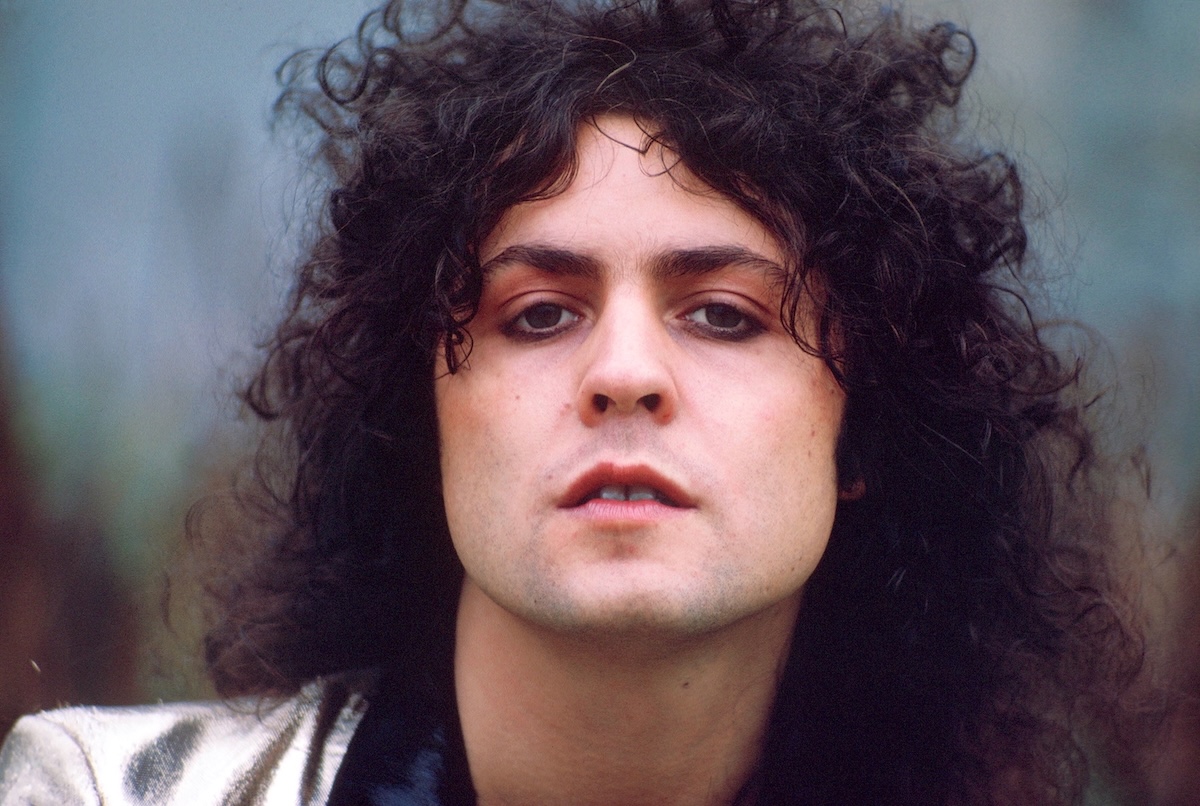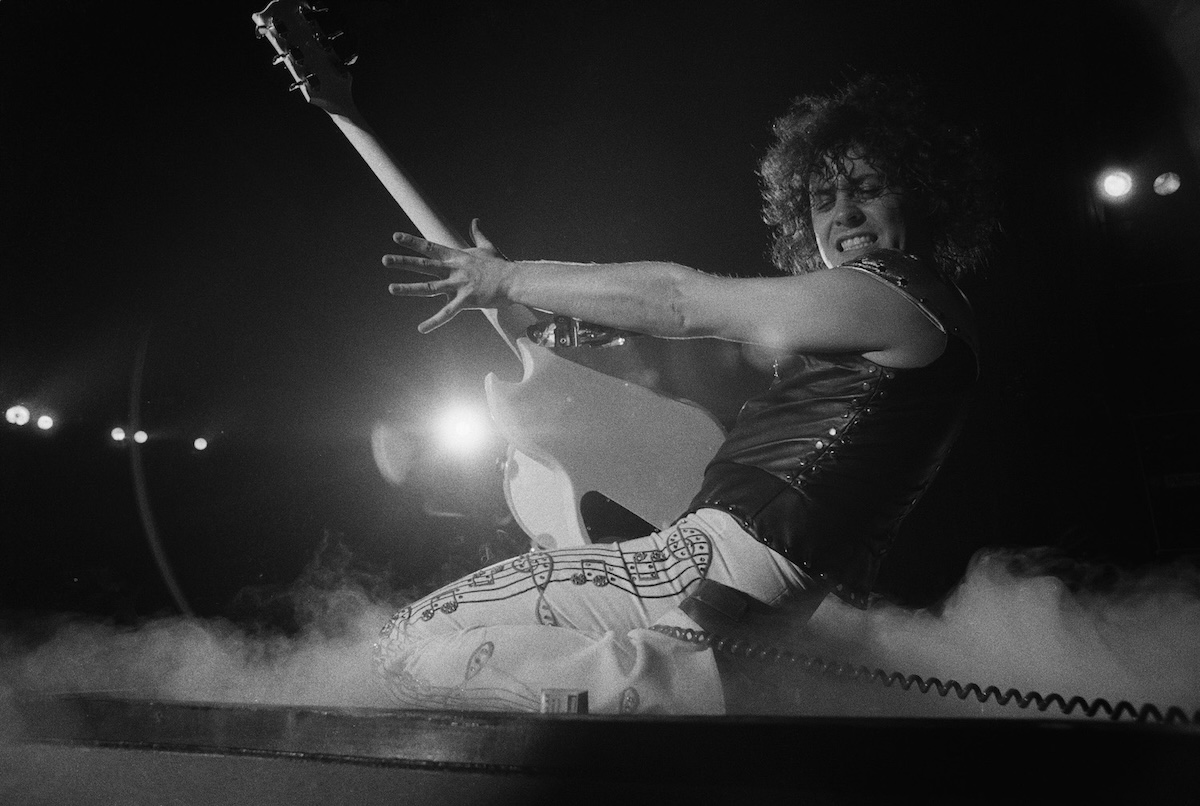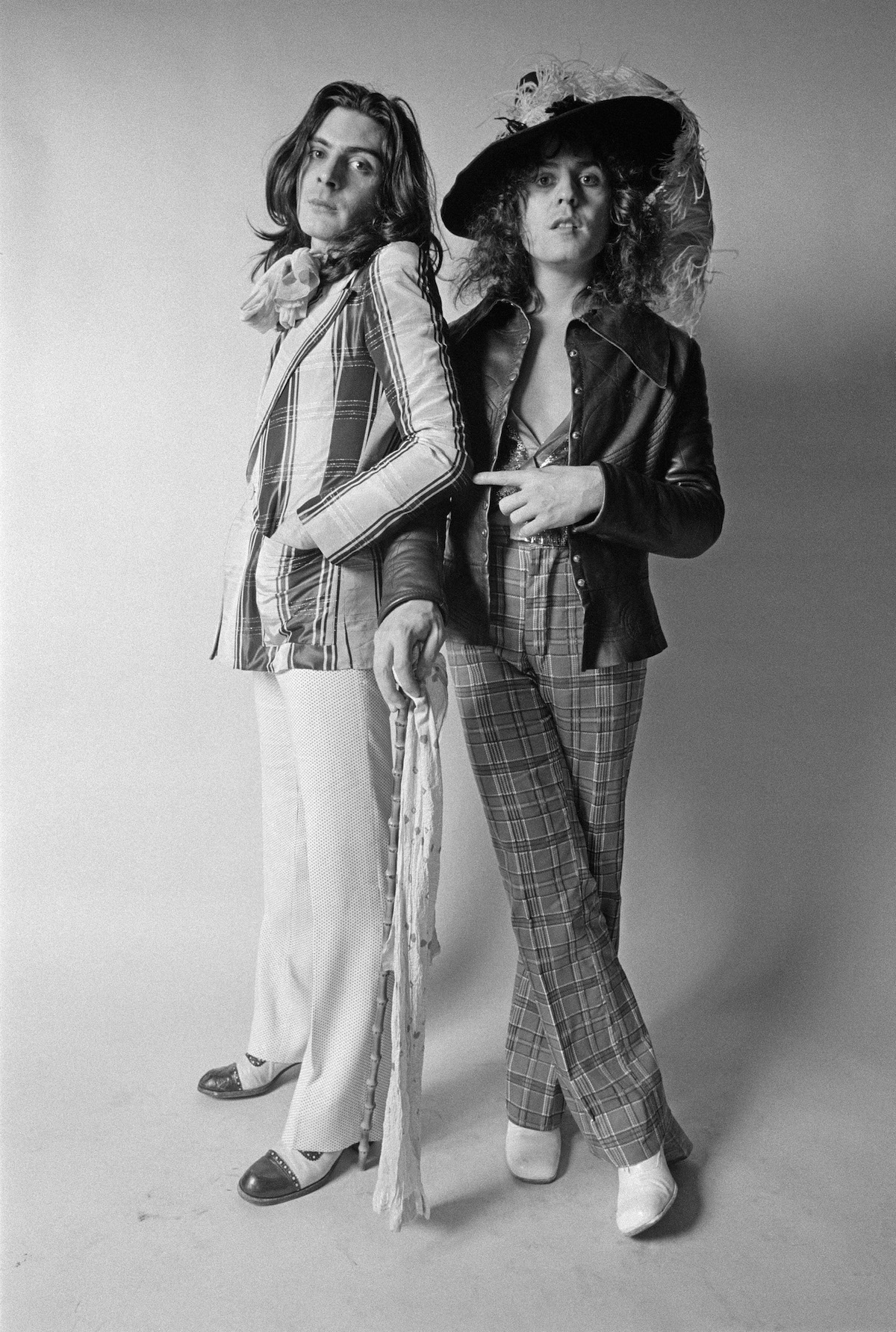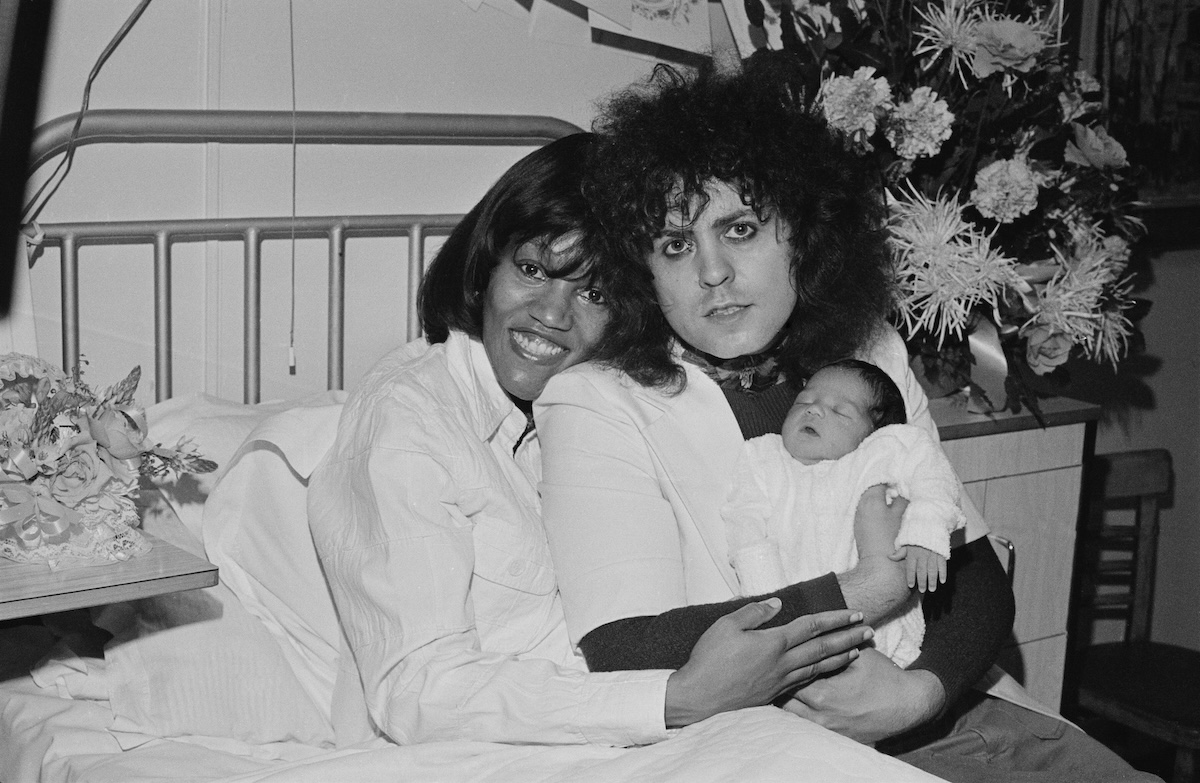
Over the week my mother was dying, I listened to Boy George’s second solo album, Tense Nervous Headache, every night after coming home from the hospital. Locked in my bathroom, sitting on the floor, my 21-year-old self needed at least one full playthrough to help process what was happening.
Less than a year later, still deep in grief, I picked up a T. Rex compilation on cassette from a secondhand shop in Notting Hill, London. I pressed play, and on the second track, “Jeepster,” I heard some of the lyrics that had helped hold me up during my mother’s final days—filtered through Boy George’s “Something Strange Called Love.”
More from Spin:
- Back To ‘Life’: Taylor Swift Announces New Album
- New Florence + The Machine Music On The Way?
- Maye Opens the Heavens
Boy George has been transparent and very vocal about T. Rex and its enigmatic frontman, Marc Bolan’s, influence on him. With that unofficial compilation and the lyrical bridge between the two, I was inducted into the Church of Bolan.
Everyone who’s a Bolan acolyte has a similar discovery story. Ethan Silverman, director of the 99-minute documentary AngelHeaded Hipster: The Songs of Marc Bolan & T. Rex, which comes to North American cinemas August 8 (and to VOD September 5), has a unique one.
A longtime theatre director, Silverman developed projects for Pete Townshend, who connected him with the Who’s manager, Bill Curbishley (a producer on AngelHeaded Hipster). Curbishley floated the idea of a musical using songs from British ’70s bands, and mentioned T. Rex. Silverman went down the Bolan wormhole and emerged a card-carrying fan three weeks later.
“It blew my mind,” says Silverman from his home in New York. “I thought not only is this great and so cool sounding, but everybody has stolen from him: musically, rhythmically, lyrically. I couldn’t believe that he never really cracked America before his tragic death. Bill and I got involved with another project, but I was still on my T. Rex personal journey.”

The idea that became AngelHeaded Hipster was rekindled over lunch with another T. Rex-influenced musician. Silverman returned to Curbishley to pitch a covers album featuring both well-known and lesser-known artists—and suggested filming the process to help secure financing.
Recording began before the pandemic, and the 25-song album of the same name was released in 2020, the year T. Rex was inducted into the Rock and Roll Hall of Fame. Two years later, the documentary premiered at Tribeca, and in 2023, it was released in the U.K. Now, a year on, American audiences are finally getting their delayed look—mirroring Bolan and T. Rex’s experience on these shores.
The film’s star power alone underscores Bolan’s influence. Ringo Starr, Elton John, Billy Idol, Joe Elliott, Beth Orton, and Nena all appear. Cameron Crowe recalls interviewing Bolan. Bolan’s partner, Gloria Jones, and their son, Rolan Bolan—who was 2 when Bolan died in a car crash—share personal memories. Best of all is archival footage of David Bowie, speaking about their competitive but ultimately close friendship.
According to Silverman, Curbishley contacted Bowie’s estate, which immediately approved use of his music and footage. “When you’re going for these big songs and these big pieces of archival stuff, it helps when you can write that you’ve got the approval of the David Bowie estate. The biggest people sometimes end up being the best. There was some snipiness between them [Bowie and Bolan] too, but it’s fantastic. David makes the film better.”
In the studio, AngelHeaded Hipster features U2’s rendition of “Bang a Gong,” Nick Cave’s “Cosmic Dancer,” and covers by Joan Jett, Devendra Banhart, Maria McKee, Macy Gray, Kesha, and others—all produced by the late Hal Willner. Willner’s earlier Lost in the Stars: The Music of Kurt Weill, which brought together a diverse cast of interpreters, made him the ideal choice.

While Bowie’s name helped secure music rights, Cave’s presence helped bring living artists on board and allowed their sessions to be filmed.
“Hal was on the phone with Nick Cave, and Nick was in a very quiet period because his son had just died,” recounts Silverman. “He said he was going to start this album with Marc Bolan songs and Nick said, ‘I have to do that.’ We did it without the project even really starting, and it was magic. I had the footage so I could put something together to show it’s worth making this film. I will be forever grateful to Nick Cave. He’s a high-quality artist and a high-quality human being. He elevated us and we spent the next few years living up to him and what he brought to the project.”
The best parts of AngelHeaded Hipster are Bolan himself. Riveting performances, footage of him playing at home, and flippant interviews reveal his confidence, energy, style, and oft-commented-on good looks. Though admittedly difficult to secure, there aren’t enough of these “manic pixie dream boy” moments—to borrow the phrase from The Big Issue. But when he performs with Bowie on his TV variety show Marc, it’s a glam rock wet dream, or as Bolan describes it, “erection rock.”
While Bolan’s ties to music legends are central to the film, equally influential were two women in his life: his wife, June, and his aforementioned partner, Gloria Jones. This isn’t explored in the film, but June’s efficiency and focus, honed while working with Pink Floyd’s management, shaped both Bolan’s personal and professional life.

“[June] was his everything,” says Silverman. “She is the one who, I think, kept his feet on the ground so he could get from A to B to C, to have the career he did. That is absolutely true. And then with Gloria, because she was a background singer for him on a tour, he realized the musical contribution she could make. He got a lot from his women. I think Marc would have been the first person to admit these women made him, that these women created his ability to be Mark Bolan and do T. Rex.”
In one interview, Jones—who founded the Marc Bolan School of Music and Film in Sierra Leone, where she lives—recalls Bolan’s stunned reaction to fans’ lukewarm response to his artistic shifts. It’s the only moment viewers glimpse a flicker of insecurity in the otherwise self-possessed star.
Some critics have noted the film seems torn between being a behind-the-scenes album documentary and a comprehensive Bolan portrait. “Why does a documentary have to be one thing? Why can’t it be a few things?” says Silverman, who counts this film as his first feature-length documentary.
“I came up with this concept of using the footage I had shot in the studio, wanting it to exist on its own, showing Marc’s music being alive now and coming to life—not just as an album promo, but how the songs are made, what are they trying to say, and how they affect the artist—then intercut it for context with Marc. The problem is, there are very few people who perform and have the charisma and beauty of Marc Bolan. How do we honor and showcase this unbelievably authentic, charismatic, creative artist but make it dynamic? It was a challenge, but I loved the challenge.”
To see our running list of the top 100 greatest rock stars of all time, click here.




